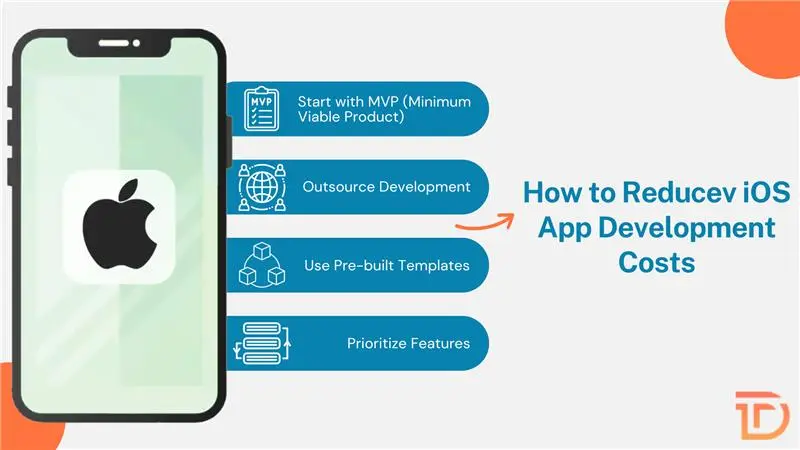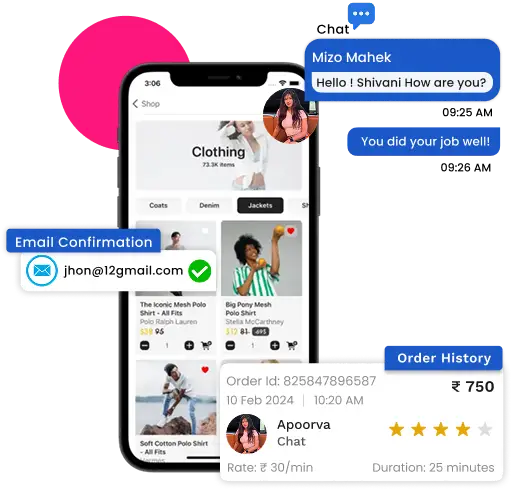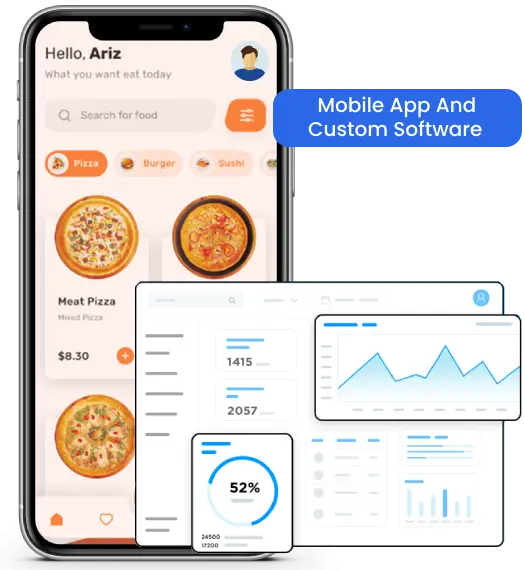Developing an iOS app is an exciting venture for any business or entrepreneur looking to create a presence in the mobile app marketplace. However, before diving into the development process, it’s essential to understand the factors that influence the overall cost. The price to develop an iOS app can vary significantly based on several factors such as features, design, complexity, and the development team you choose. This blog aims to give you a comprehensive understanding of iPhone app development cost, what influences iOS app development costs, helping you plan your budget accordingly.
Factors That Affect iOS App Development Cost
Several factors contribute to Apple app development cost. These factors include the complexity of the app, the design requirements, the experience of the development team, and the geographical location of the developers. Let’s break these down in more detail.

App Complexity
The complexity of an app is one of the most significant factors in determining its development cost. Apps can range from simple to highly complex, with different price points attached to each type.
- Simple Apps: These apps have minimal features, such as a basic user interface, no complex functionalities, and limited interaction with external services or databases. Examples include informational apps or apps with only a few static screens. The development of simple apps generally costs less.
- Moderately Complex Apps: Apps that include more advanced features, such as user authentication, integration with third-party services, and advanced UI/UX elements fall into this category. These apps require more time and effort, increasing the overall development cost.
- Complex Apps: Apps that require sophisticated features, such as real-time communication, integrations with multiple services or databases, GPS tracking, and push notifications, are classified as complex. Developing complex apps involves more development time and testing, which translates into higher costs.
Design and User Experience (UX/UI)
A well-designed app is essential for user retention and satisfaction. The design phase of the app can greatly impact the overall cost. Apps with intricate design elements, custom animations, and user interactions typically require more time to design and develop, resulting in higher costs.
- Basic Design: A simple, straightforward design with a few screens and minimal animations.
- Custom Design: Apps that require detailed custom designs, unique themes, or intricate animations can increase costs. High-quality graphics, fluid animations, and creative layouts can add to the total development expense.
App Features
The number and type of features you want in your iOS app can have a significant impact on the cost. Some of the most common features found in iOS apps include:
- User Authentication: Features such as login screens, user registration, and social media logins.
- Push Notifications: Sending real-time notifications to users to increase engagement.
- Payment Gateway Integration: Enabling secure transactions and payments through the app.
- Geolocation: Features like GPS tracking, location-based services, and maps.
- Backend Integration: Connecting the app to external services or databases for data synchronization.
- Third-Party API Integrations: Connecting to third-party services like payment systems, social media platforms, or other APIs for added functionality.
Each feature adds complexity to the development process and increases the overall cost.
App Development Team’s Experience and Location
The experience and location of the development team also play a critical role in determining the cost of iOS app development. Development teams with more experience tend to charge higher rates due to their expertise in creating high-quality, reliable apps. On the other hand, newer or less experienced developers may offer lower rates but could take longer or struggle to deliver the same level of quality.
- Geographical Location: Developers in different regions charge different rates. For example, developers in North America or Western Europe typically charge higher fees than developers in Eastern Europe, Asia, or Latin America. Specifically, the iOS app development cost in India is considerably more affordable while still offering access to skilled professionals, making it a popular choice for startups and businesses looking to optimize their budgets without compromising on quality.
- Freelance vs. Agency: Freelance developers may offer lower rates compared to development agencies. However, agencies often provide a wider range of services, such as project management, design, and post-launch support, which can justify their higher rates.
App Maintenance and Updates
App development doesn’t stop once the app is launched. Ongoing maintenance, bug fixes, updates, and new feature additions are essential for keeping the app functional and relevant. Most app developers offer a post-launch maintenance plan, which is an additional cost to consider when planning your app budget. Maintenance costs typically include:
- Bug Fixes: Addressing any issues that arise after the app has been launched.
- OS Updates: Updating the app to remain compatible with new iOS versions.
- Feature Enhancements: Adding new features or improving existing ones to keep the app fresh and competitive.
- Security Patches: Ensuring the app is secure and free from vulnerabilities.
It’s important to factor in the cost of app maintenance and updates when calculating the overall cost of development.
What is the Average Cost to Develop an iOS App?
Now that we understand the various factors that influence the cost of iOS app development, let’s break down the average cost to develop an iOS app:
Basic App Development Cost
A simple app with minimal features and basic design typically costs between $1,000 to $5,000. This includes basic functionality such as a few screens, static content, and limited user interaction.
Moderate Complexity App Development Cost
Apps with more advanced features such as user authentication, geolocation, and database integration can cost between $5,000 to $20,000. These apps often require more development time and expertise in areas like security, API integration, and backend management.
Complex App Development Cost
Highly complex apps that require real-time communication, complex backend systems, payment integrations, or custom UI/UX design can range from $20,000 to $50,000 or more. These apps require larger teams, more resources, and a longer development timeline, which drives up the cost.
App Maintenance Costs
Ongoing maintenance typically costs around 5% to 10% of the initial development cost annually. This can vary depending on how often the app needs updates and how extensive those updates are.
Estimating iOS App Development Costs Based on App Type
Different types of apps come with different development costs. Here are some examples:
E-commerce Apps
Building an e-commerce app involves features like product catalogs, shopping carts, payment gateway integration, and secure transactions. An e-commerce app can cost between $10,000 to $150,000, depending on the features and design complexity.
Social Media Apps
Social media apps usually require real-time interactions, user profiles, multimedia uploads, and notifications. The cost for developing a social media app can range from $10,000 to $200,000 or more, depending on the features and scale.
On-Demand Service Apps
On-demand service apps, such as ride-hailing, delivery services, or booking apps, require real-time tracking, payment integration, and location-based services. These apps can cost between $15,000 to $150,000, depending on complexity.
Games
Developing a mobile game involves a high level of creativity, graphics design, and complex programming. The cost of game development can vary widely, with simple games starting at $10,000, while highly complex games with advanced graphics and interactivity can exceed $500,000.
How to Save on iOS App Development Costs
While iOS app development can be expensive, there are a few strategies that can help reduce costs without compromising quality:

- Start with MVP (Minimum Viable Product): Focus on building the core functionality first and add advanced features later. This allows you to launch your app quickly and gather feedback from users before investing in additional features.
- Outsource Development: Consider working with freelance developers or development teams from regions with lower labor costs. Ensure that the team has experience and a proven track record of successful app development.
- Use Pre-built Templates: Leveraging pre-built app templates or UI frameworks can save time and money, especially for simple apps with minimal custom design requirements.
- Prioritize Features: Carefully evaluate which features are essential for your app’s success and focus on those first. Avoid adding unnecessary features that might increase development time and costs.
Way Forward
The cost of developing an iOS app varies depending on several factors, including the complexity of the app, its features, design, and the development team’s location. Basic apps can cost as little as $1,000, while complex, feature-rich apps can cost hundreds of thousands of dollars. To better understand the investment, businesses should seek a mobile app development cost breakdown that takes into account the development stages, design, testing, and any additional integrations required. Businesses should carefully assess their goals, budget, and desired features to create a realistic estimate for app development costs.
Remember, while the initial development cost is important, ongoing maintenance and updates are also a critical part of your app’s life cycle. Understanding all aspects of the app development process will help you make informed decisions and set a realistic budget for your iOS app project.







